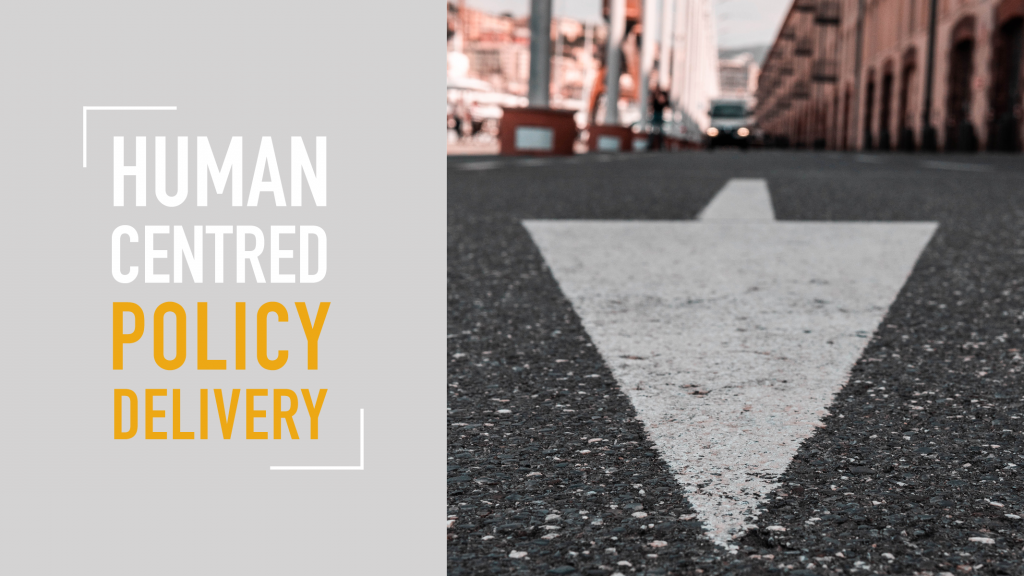In our last blog we deep-dived into human-centred design in policy-making. We showed why this approach fits the public sector and provided the reader with several real-world examples.
In this blog, we will provide you with a coherent process on how to systematically integrate citizens in policy-making and -delivery. In the next blog we will then look more closely into the stages of the process we developed and outline possible tools one could use.
The human-centred policy-delivery process
Building on existing materials, such as research papers, articles, our own expertise as practitioners and our experience from several projects, we developed a coherent process that integrates the principles of Design Thinking into policy-making. In short, we see a seven-stage-process which provide several opportunities for civic participation:

1. Understand & Envision
To understand the policy problem in its breadth and depth, policy-makers can utilise needfinding methods, through interviews or shadowing. The insights generated helps them in the next step to define a common vision for the new policy that creates real impact for citizens.
2. Define & Screen
Based on the vision for the new policy, politicians and policy-makers determine the goals the new policy should help to reach. In the next step, sourcing and assessing best practice policies that already work and reach the defined goals elsewhere, is a necessary step.
3. Analyse & Select
In this stage it is important for policy-makers to fully understand the researched best practice policies and benchmark those policies against each other. This is important to choose the best policy to reach the pre-defined goals.
4. Transfer & Co-Design
After having selected a best practice policy, the knowledge from policy owners can be transferred to the new setting. As this step helps to identify necessary adaptations, it is a necessary step before co-creating the new policy with relevant stakeholders.
5. Trial & Monitor
The new co-created and co-designed policy needs to be tested in a selected region / cluster to evaluate how it works on the ground. To do that, qualitative and quantitative data and information needs to be gathered, e.g. through qualitative interviews and surveys.
6. Evaluate & Co-Adapt
The gathered data and information is to be analysed through data analysis and enriched through further data collection. The results serve as the basis for modifying the co-created policy together with relevant actors and stakeholders.
7. Implement & Measure
After this feedback-loop, it is possible to further roll-out the revised policy in the country / region / municipality. We encourage policy-makers to continue to evaluate the new policy by gathering and analysing data.
Tools policy-makers could use
As we have now deepened our understanding of a systematic process to human-centred policy-making, in the next blog we will deep-dive into each of the seven stages, and provide you with tools you could use.
Have you ever let citizens participate in policy-making? What are your experiences? Any tools you want to share? We value your input and look forward to hearing your thoughts!
